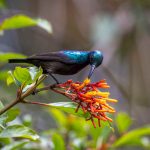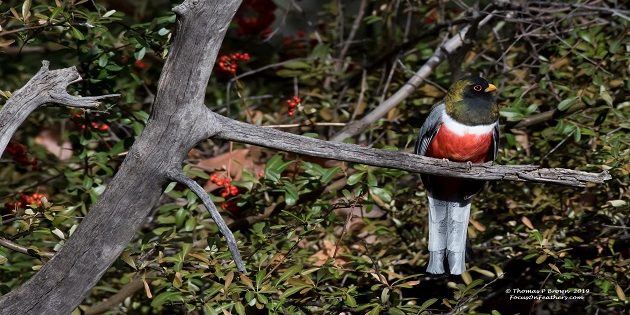We had agreed that our Queens Big Day, after lasting all day and encompassing many great birds, would finish where it started, within the friendly and familiar confines of Jamaica Bay Wildlife Refuge. We three intrepid big day birders, me, Doug Gochfeld and Heydi Lopes, joined again by Shane Blodgett, would try to fill in the gaps in our li…wait, flyover Boat-tailed Grackle in the parking lot! One gaping hole in the list filled and bird number 143! We got our scopes and marched, double time, down to the south edge of the West Pond, hoping for some ducks we had missed and a Tricolored Heron. The heron was not there, most of the ducks dodged us, except, wait, Northern Shoveler! Bird number 144!
We scanned south marsh and the pond some more and came up with nothing new so we started to double time back to parking lot so we could get across Cross Bay Boulevard to the East Pond to search for more ducks. Doug lingered behind a bit, eager for one more scan and then he shouted “Peregrine Falcon!”
We looked up, got it rocketing along, and rejoiced at bird number 145, a bird that we had long since given up on seeing. Once we crossed Cross Bay Boulevard and started single file down the path to Big John’s Pond I started to relax, thinking that we could see nothing new until we reached the pond. Then an odd thrush hopped up off the trail and into a low sapling. Wait, that bird isn’t a thrush! It’s a tanager! A female Summer Tanager! Bird number 146! Mind you, I hadn’t seen a Summer Tanager all year and they are not a bird one can expect to see in New York every year. The fact that one basically landed at our feet at the very end of a big day is simply absurd. Not that we were complaining…
Big John’s Pond held neither our hoped-for Green Heron nor our much-needed Wood Duck, but the East Pond had both Green-winged Teal and Blue-winged Teal, bringing our total to 148. We really wanted 150 species, so we stayed and waited and stayed and waited and then a Tricolored Heron flew overhead on its way in to roost and we were up to 149! As much as we waited we could not add another species…until now, when I was writing this post and realized that somehow Virgina Rail had been left off our checklist and we actually did get 150 species of bird in Queens in one day! Whoo-freaking-hoo!
As amazing a big day as it was we still missed some really, really, easy birds. An incomplete list of some of the relatively easy species we dipped on includes Wood Duck, Cedar Waxwing, Lesser Scaup, Green Heron, Seaside Sparrow, Northern Harrier, Eastern Wood-Pewee, Blue-winged Warbler, Swamp Sparrow, Canada Warbler, White-crowned Sparrow, Belted Kingfisher, and Common Nighthawk.
Here is our list, for those who are interested in such things…
- Brant
- Canada Goose
- Mute Swan
- Gadwall
- American Black Duck
- Mallard
- Blue-winged Teal
- Northern Shoveler
- Green-winged Teal
- Greater Scaup
- White-winged Scoter
- Bufflehead
- Red-breasted Merganser
- Ruddy Duck
- Ring-necked Pheasant
- Common Loon
- Northern Gannet
- Double-crested Cormorant
- Great Blue Heron
- Great Egret
- Snowy Egret
- Little Blue Heron
- Tricolored Heron
- Black-crowned Night-Heron
- Yellow-crowned Night-Heron
- Glossy Ibis
- White-faced Ibis
- Osprey
- Red-tailed Hawk
- Merlin
- Peregrine Falcon
- Clapper Rail
- Virginia Rail
- Black-bellied Plover
- Semipalmated Plover
- Piping Plover
- Killdeer
- American Oystercatcher
- Spotted Sandpiper
- Solitary Sandpiper
- Greater Yellowlegs
- Willet
- Lesser Yellowlegs
- Ruddy Turnstone
- Red Knot
- Sanderling
- Semipalmated Sandpiper
- Least Sandpiper
- Dunlin
- Short-billed Dowitcher
- American Woodcock
- Bonaparte’s Gull
- Little Gull
- Laughing Gull
- Ring-billed Gull
- Herring Gull
- Glaucous Gull
- Great Black-backed Gull
- Least Tern
- Gull-billed Tern
- Black Tern
- Roseate Tern
- Common Tern
- Forster’s Tern
- Black Skimmer
- Rock Pigeon
- Mourning Dove
- Yellow-billed Cuckoo
- Barn Owl
- Great Horned Owl
- Chimney Swift
- Ruby-throated Hummingbird
- Red-bellied Woodpecker
- Downy Woodpecker
- Hairy Woodpecker
- Northern Flicker
- Willow Flycatcher
- Great Crested Flycatcher
- Eastern Kingbird
- White-eyed Vireo
- Yellow-throated Vireo
- Blue-headed Vireo
- Warbling Vireo
- Red-eyed Vireo
- Blue Jay
- American Crow
- Fish Crow
- Common Raven
- Tree Swallow
- Northern Rough-winged Swallow
- Bank Swallow
- Cliff Swallow
- Barn Swallow
- Black-capped Chickadee
- Tufted Titmouse
- White-breasted Nuthatch
- Carolina Wren
- House Wren
- Marsh Wren
- Blue-gray Gnatcatcher
- Veery
- Bicknell’s Thrush
- Swainson’s Thrush
- Wood Thrush
- American Robin
- Gray Catbird
- Northern Mockingbird
- Brown Thrasher
- European Starling
- Tennessee Warbler
- Orange-crowned Warbler
- Nashville Warbler
- Northern Parula
- Yellow Warbler
- Chestnut-sided Warbler
- Magnolia Warbler
- Black-throated Blue Warbler
- Yellow-rumped Warbler
- Black-throated Green Warbler
- Blackburnian Warbler
- Prairie Warbler
- Blackpoll Warbler
- Black-and-white Warbler
- American Redstart
- Worm-eating Warbler
- Ovenbird
- Northern Waterthrush
- Common Yellowthroat
- Wilson’s Warbler
- Summer Tanager
- Scarlet Tanager
- Eastern Towhee
- Chipping Sparrow
- Savannah Sparrow
- Saltmarsh Sharp-tailed Sparrow
- Song Sparrow
- White-throated Sparrow
- Northern Cardinal
- Rose-breasted Grosbeak
- Indigo Bunting
- Bobolink
- Red-winged Blackbird
- Common Grackle
- Boat-tailed Grackle
- Brown-headed Cowbird
- Orchard Oriole
- Baltimore Oriole
- House Finch
- American Goldfinch
- House Sparrow













So you guys actually going to try next year? 🙂
I think the title for this post should have been “150! Really. Honest. Not making it up.”
I think you guys HAVE to do it again next year. Just look at all the articles you got out of it. Congratulations on an awesome Queens Big Day and some excellent reporting.
It sounds like a great day. There are always a few easy birds missing. My last big day list in DC was missing such rarities as Red-tailed Hawk, Black Vulture, and Great Egret.
It was an awesome day, and thanks for letting me be part of the team!